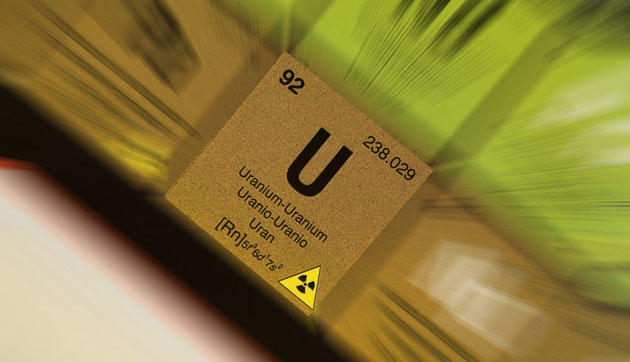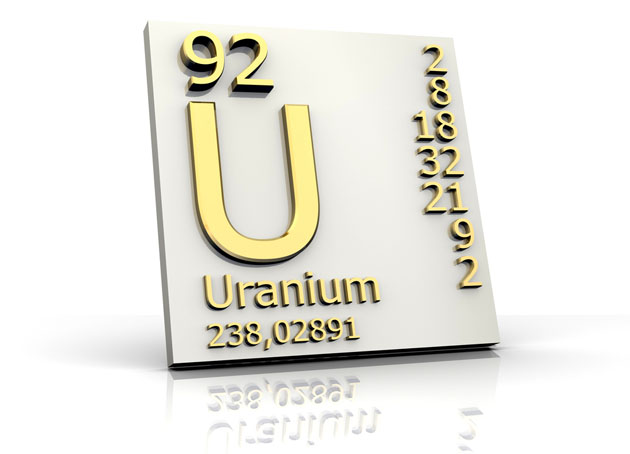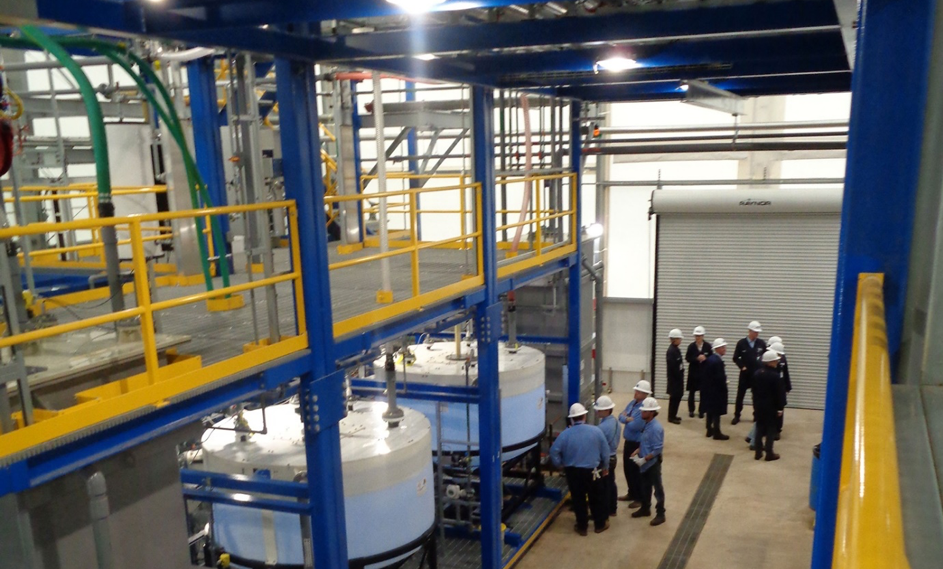TICKERS: , ETE, ET, FIS, , , NYSE,
Top-Rated Energy Investing Advice Revisited
Source: The Editors, The Energy Report (11/22/11)
'Tis the season to count our blessings. At The Energy Report, we are grateful for all the distinguished experts who share their sage advice on the oil, gas, MLP, uranium and alternative energy investing sector day in and day out. To thank you, our dedicated readers, we are sharing some of the most-read insights published here in the last year. We appreciate your support and look forward to navigating the ups and downs of the energy market together in the coming years.
Peak Oil Plays
Kevin Bambrough, founder of Sprott Resource Corp., believes in investing in natural resources to hedge a doomed paper currency system. In this Feb. 8 interview titled Fiat Currencies are Worthless, he shared his views on investing in energy.
"I'm a believer in peak oil. The major oil discoveries were made in the 1960s and 1970s, and the world's major oil fields on most continents have already peaked in terms of production. Now, the discoveries are getting smaller and those that get headlines from time to time are really irrelevant compared to the scale of global consumption. We still get something like 50% of our energy from oil. That statistic—and the fact that the U.S. is a massive importer of oil and runs a substantial trade deficit—has led me to the view that energy prices in the U.S. will go up dramatically. Also, in looking at the cost of coal production, we don't properly account for the environmental costs. I don't think we've begun to come close to accounting for greenhouse gases or general pollution.
"Gas is cheap today, obviously; I think it's very cheap. But I think it's too cheap compared to the level at which it should be trading. I believe the average gas company is engaging in production despite the fact that it can't make money at current prices; and, ultimately, we may find that reserves are overstated and companies can't produce at these prices.
"They're doing it for a variety of reasons. First, they have commitments on leases that they must maintain, so they are forced into drilling those properties even though it may not be economic. Secondly, we've seen some alternative forms of financing emerge in the form of joint ventures (JVs) and other creative-financing techniques that are enabling these companies to continue their drilling programs. But I think, slowly, you'll start to see the switch to more liquids-rich deposits by some of these producers. In order to sustain the production needed to meet demand, we're going to need higher prices than those currently in the market."
He pointed to Orion Oil & Gas Corporation (OIP:TSX) as an oil and natural gas play he made money on by buying at the right time.
MLP Mainstreaming?
Morgan Stanley Executive Director Stephen Maresca is an expert on energy master limited partnerships (MLPs). In a July 7 interview titled: Are Midstream MLPs Going Mainstream?, he shared his outlook for the investing vehicle designed to facilitate getting natural resources to market.
"I look toward a good future of capital investment over at least the next three to five years in the midstream sector—and the MLPs specifically—given supplies in different regions that need the proper infrastructure of pipelines, storage, gathering and processing assets to bring that supply to market to be used. "So I think it's a good time to be involved in the midstream sector. MLPs offer a good way to play it from a yield and total return standpoint, given the dividend growth. On the basis of their relative valuations, some of the C-Corps can be even better ways to play it. They get the benefit of the cash-flow growth and the asset upside, but they put up less capital. They're somewhat cheaper valued stocks right now but still have good growth and good total return potential as well. "
One way to have a stake in the sector, he suggested, was through Energy Transfer Equity, L.P. (ETE:NYSE), a general partner stock that has an interest in two separate MLPs—Energy Transfer Partners L.P. (ETP:NYSE) and Regency Energy Partners, L.P. (RGNC:NASDAQ). "We think ETE will benefit from significant capital spent at both of those entities, a combined total exceeding $2B that will flow up to ETE. We're looking at probably upward of 10% cash flow per share growth each year for the next couple of years. "
Food Independence
321energy.com Founder Bob Moriarty understands the link between essential food production, fertilizer prices and investing opportunities. In the March 15 article, Food is Fuel, he connected the dots between population growth and oil production. "The two are identical from about 1850 on. Here's why: it takes so many calories of fuel to produce so many calories of food. It's direct, linear and absolute.
"The majority of people in the world survive on $2 worth of food each day. But how do you eat less when you are on the edge of starvation in the beginning? There has been a 70% increase in the price of wheat since June. That's catastrophic.
"I believe that peak oil, or the peak of oil production, occurred back in 2005 or 2006. Peak oil means peak food, which means peak population. We're going to consume less fuel per capita 20 years from now because there's simply no alternative. In turn, that means the population is going to decrease. It could decrease through starvation, disease, war or all three. "
As food becomes more valuable, Moriarty suggested that fertilizer—potash in particular—will be in higher demand. "If the price of wheat doubles, farmers can afford twice as much potash. It's not necessarily more efficient; it's just cheaper in relative terms." That increased demand will mean an increase in prices, and opportunities for juniors to find more economic sources, Moriarty reasoned. He singled out Passport Potash Inc. (PPI:TSX.V; PPRTF:OTCQX) and Verde Potash (NPK:TSX.V) as ways to share in the upside.
Unstoppable Uranium
Dundee Securities Mining Analyst David Talbot remains bullish on nuclear energy. In interviews posted on January 25 (This Time, Uranium Demand is for Real) and July 21 (Uranium and Lithium Demand Powers Stocks), he shared his thesis for industry growth.
"The demand picture hasn't really changed as much as the general media portrays. We might see uranium demand decline about 5% to 10% from where we predicted, by about 2020. But, we still expect about 240 to 280 million pounds (Mlb) of demand per year by then, which is really about an increase of 30% to 55% from here.
"Worldwide, 440 reactors are in operation, 61 under construction and 154 planned. Most of the sentiment over the past several months was driven by emotion and fear and reaction to what is being shown on the news rather than reason. Take Germany, Switzerland and Italy for example. Much of the mainstream media portrays Germany's anti-nuclear stance as the death knell for the industry. People don't understand that as recently as last September, Germany was preparing to get out of the nuclear power industry and did a sudden about face at that time by extending the deadline.
"Looking at the numbers, the effect of Germany's shutdown won't be as bad as most think, either. Germany's 17 reactors only use 5% of current demand. This was expected to decline to about 3% by 2020. Switzerland only has five reactors and 1.4 Mlb of annual requirements. That's less than 1% of world uranium demand. Italy, no reactors, none under construction, none planned. We do believe there will be cancellations and delays, but many of those countries were either on the fence to begin with or really just have smaller nuclear programs.
"China, India and Russia alone account for about 50% of the new reactor build and they're all on board. India just announced that its new liability laws are due by the end of the month. This will likely kick start the nuclear build in that country. Saudi Arabia had 16 proposed reactors, which was a pleasant surprise in the land of big oil. That news essentially negated Germany's news in the long-term. Plus, strong support out of the United Arab Emirates and the announcement of new build in the U.K. were positive signs."
Talbot suggested Fission Energy Corp. (FIS:TSX.V; FSSIF:OTCQX) and Uranerz Energy Corp. (URZ:TSX; URZ:NYSE.A) as companies that are positioned to take advantage of the inevitable demand.
For the Love of Alt. Energy
Legendary mining entrepreneur Ross Beaty started the geothermal, wind, and run of river clean energy company Alterra Power Corp. (AXY:TSX) in 2008 because he wanted to leave a legacy for his children. In the Oct. 12 story Gold, Silver, Copper, Nickel and Alternative Energy for Fun and Profit, he said: "Oil and gas are great for making a lot of things, but it is a terrible waste to burn them.
"Even though I am disappointed in the stock market reaction the last couple of years, I am proud of our execution of the business plan. We have a wonderful team of experts, adequate capital and we are building a large alternative energy company that is profitable and sustainable and will live way beyond my lifetime. This is based on development of energy sources that are free: wind, heat and water. You just have to hook them up to a turbine. This takes a lot of money, but once they get going, they run essentially forever at very low cost.
"It's the opposite extreme of mining where you have no control over your revenues. In this business, you fix the prices for the long term, 20–25 year contracts, so your revenues are steady and predictable. Banks love these long-term businesses. These are ultimately big dividend producers."
Want to read more exclusive Energy Report interviews like this? Sign up for our free e-newsletter, and you'll learn when new articles have been published. To see a list of recent interviews with industry analysts and commentators, visit our Exclusive Interviews page.
DISCLOSURE:
From time to time, Streetwise Reports LLC and its directors, officers, employees or members of their families, as well as persons interviewed for articles on the site, may have a long or short position in securities mentioned and may make purchases and/or sales of those securities in the open market or otherwise.
The following companies mentioned in the interview are sponsors of The Energy Report: Fission Energy, Uranerz Energy, Passport Potash, Verde Potash, Energy Transfer Partners.
Kevin Bambrough, founder of Sprott Resource Corp., believes in investing in natural resources to hedge a doomed paper currency system. In this Feb. 8 interview titled Fiat Currencies are Worthless, he shared his views on investing in energy.
"I'm a believer in peak oil. The major oil discoveries were made in the 1960s and 1970s, and the world's major oil fields on most continents have already peaked in terms of production. Now, the discoveries are getting smaller and those that get headlines from time to time are really irrelevant compared to the scale of global consumption. We still get something like 50% of our energy from oil. That statistic—and the fact that the U.S. is a massive importer of oil and runs a substantial trade deficit—has led me to the view that energy prices in the U.S. will go up dramatically. Also, in looking at the cost of coal production, we don't properly account for the environmental costs. I don't think we've begun to come close to accounting for greenhouse gases or general pollution.
"Gas is cheap today, obviously; I think it's very cheap. But I think it's too cheap compared to the level at which it should be trading. I believe the average gas company is engaging in production despite the fact that it can't make money at current prices; and, ultimately, we may find that reserves are overstated and companies can't produce at these prices.
"They're doing it for a variety of reasons. First, they have commitments on leases that they must maintain, so they are forced into drilling those properties even though it may not be economic. Secondly, we've seen some alternative forms of financing emerge in the form of joint ventures (JVs) and other creative-financing techniques that are enabling these companies to continue their drilling programs. But I think, slowly, you'll start to see the switch to more liquids-rich deposits by some of these producers. In order to sustain the production needed to meet demand, we're going to need higher prices than those currently in the market."
He pointed to Orion Oil & Gas Corporation (OIP:TSX) as an oil and natural gas play he made money on by buying at the right time.
MLP Mainstreaming?
Morgan Stanley Executive Director Stephen Maresca is an expert on energy master limited partnerships (MLPs). In a July 7 interview titled: Are Midstream MLPs Going Mainstream?, he shared his outlook for the investing vehicle designed to facilitate getting natural resources to market.
"I look toward a good future of capital investment over at least the next three to five years in the midstream sector—and the MLPs specifically—given supplies in different regions that need the proper infrastructure of pipelines, storage, gathering and processing assets to bring that supply to market to be used. "So I think it's a good time to be involved in the midstream sector. MLPs offer a good way to play it from a yield and total return standpoint, given the dividend growth. On the basis of their relative valuations, some of the C-Corps can be even better ways to play it. They get the benefit of the cash-flow growth and the asset upside, but they put up less capital. They're somewhat cheaper valued stocks right now but still have good growth and good total return potential as well. "
One way to have a stake in the sector, he suggested, was through Energy Transfer Equity, L.P. (ETE:NYSE), a general partner stock that has an interest in two separate MLPs—Energy Transfer Partners L.P. (ETP:NYSE) and Regency Energy Partners, L.P. (RGNC:NASDAQ). "We think ETE will benefit from significant capital spent at both of those entities, a combined total exceeding $2B that will flow up to ETE. We're looking at probably upward of 10% cash flow per share growth each year for the next couple of years. "
Food Independence
321energy.com Founder Bob Moriarty understands the link between essential food production, fertilizer prices and investing opportunities. In the March 15 article, Food is Fuel, he connected the dots between population growth and oil production. "The two are identical from about 1850 on. Here's why: it takes so many calories of fuel to produce so many calories of food. It's direct, linear and absolute.
"The majority of people in the world survive on $2 worth of food each day. But how do you eat less when you are on the edge of starvation in the beginning? There has been a 70% increase in the price of wheat since June. That's catastrophic.
"I believe that peak oil, or the peak of oil production, occurred back in 2005 or 2006. Peak oil means peak food, which means peak population. We're going to consume less fuel per capita 20 years from now because there's simply no alternative. In turn, that means the population is going to decrease. It could decrease through starvation, disease, war or all three. "
As food becomes more valuable, Moriarty suggested that fertilizer—potash in particular—will be in higher demand. "If the price of wheat doubles, farmers can afford twice as much potash. It's not necessarily more efficient; it's just cheaper in relative terms." That increased demand will mean an increase in prices, and opportunities for juniors to find more economic sources, Moriarty reasoned. He singled out Passport Potash Inc. (PPI:TSX.V; PPRTF:OTCQX) and Verde Potash (NPK:TSX.V) as ways to share in the upside.
Unstoppable Uranium
Dundee Securities Mining Analyst David Talbot remains bullish on nuclear energy. In interviews posted on January 25 (This Time, Uranium Demand is for Real) and July 21 (Uranium and Lithium Demand Powers Stocks), he shared his thesis for industry growth.
"The demand picture hasn't really changed as much as the general media portrays. We might see uranium demand decline about 5% to 10% from where we predicted, by about 2020. But, we still expect about 240 to 280 million pounds (Mlb) of demand per year by then, which is really about an increase of 30% to 55% from here.
"Worldwide, 440 reactors are in operation, 61 under construction and 154 planned. Most of the sentiment over the past several months was driven by emotion and fear and reaction to what is being shown on the news rather than reason. Take Germany, Switzerland and Italy for example. Much of the mainstream media portrays Germany's anti-nuclear stance as the death knell for the industry. People don't understand that as recently as last September, Germany was preparing to get out of the nuclear power industry and did a sudden about face at that time by extending the deadline.
"Looking at the numbers, the effect of Germany's shutdown won't be as bad as most think, either. Germany's 17 reactors only use 5% of current demand. This was expected to decline to about 3% by 2020. Switzerland only has five reactors and 1.4 Mlb of annual requirements. That's less than 1% of world uranium demand. Italy, no reactors, none under construction, none planned. We do believe there will be cancellations and delays, but many of those countries were either on the fence to begin with or really just have smaller nuclear programs.
"China, India and Russia alone account for about 50% of the new reactor build and they're all on board. India just announced that its new liability laws are due by the end of the month. This will likely kick start the nuclear build in that country. Saudi Arabia had 16 proposed reactors, which was a pleasant surprise in the land of big oil. That news essentially negated Germany's news in the long-term. Plus, strong support out of the United Arab Emirates and the announcement of new build in the U.K. were positive signs."
Talbot suggested Fission Energy Corp. (FIS:TSX.V; FSSIF:OTCQX) and Uranerz Energy Corp. (URZ:TSX; URZ:NYSE.A) as companies that are positioned to take advantage of the inevitable demand.
For the Love of Alt. Energy
Legendary mining entrepreneur Ross Beaty started the geothermal, wind, and run of river clean energy company Alterra Power Corp. (AXY:TSX) in 2008 because he wanted to leave a legacy for his children. In the Oct. 12 story Gold, Silver, Copper, Nickel and Alternative Energy for Fun and Profit, he said: "Oil and gas are great for making a lot of things, but it is a terrible waste to burn them.
"Even though I am disappointed in the stock market reaction the last couple of years, I am proud of our execution of the business plan. We have a wonderful team of experts, adequate capital and we are building a large alternative energy company that is profitable and sustainable and will live way beyond my lifetime. This is based on development of energy sources that are free: wind, heat and water. You just have to hook them up to a turbine. This takes a lot of money, but once they get going, they run essentially forever at very low cost.
"It's the opposite extreme of mining where you have no control over your revenues. In this business, you fix the prices for the long term, 20–25 year contracts, so your revenues are steady and predictable. Banks love these long-term businesses. These are ultimately big dividend producers."
Want to read more exclusive Energy Report interviews like this? Sign up for our free e-newsletter, and you'll learn when new articles have been published. To see a list of recent interviews with industry analysts and commentators, visit our Exclusive Interviews page.
DISCLOSURE:
From time to time, Streetwise Reports LLC and its directors, officers, employees or members of their families, as well as persons interviewed for articles on the site, may have a long or short position in securities mentioned and may make purchases and/or sales of those securities in the open market or otherwise.
The following companies mentioned in the interview are sponsors of The Energy Report: Fission Energy, Uranerz Energy, Passport Potash, Verde Potash, Energy Transfer Partners.



























































